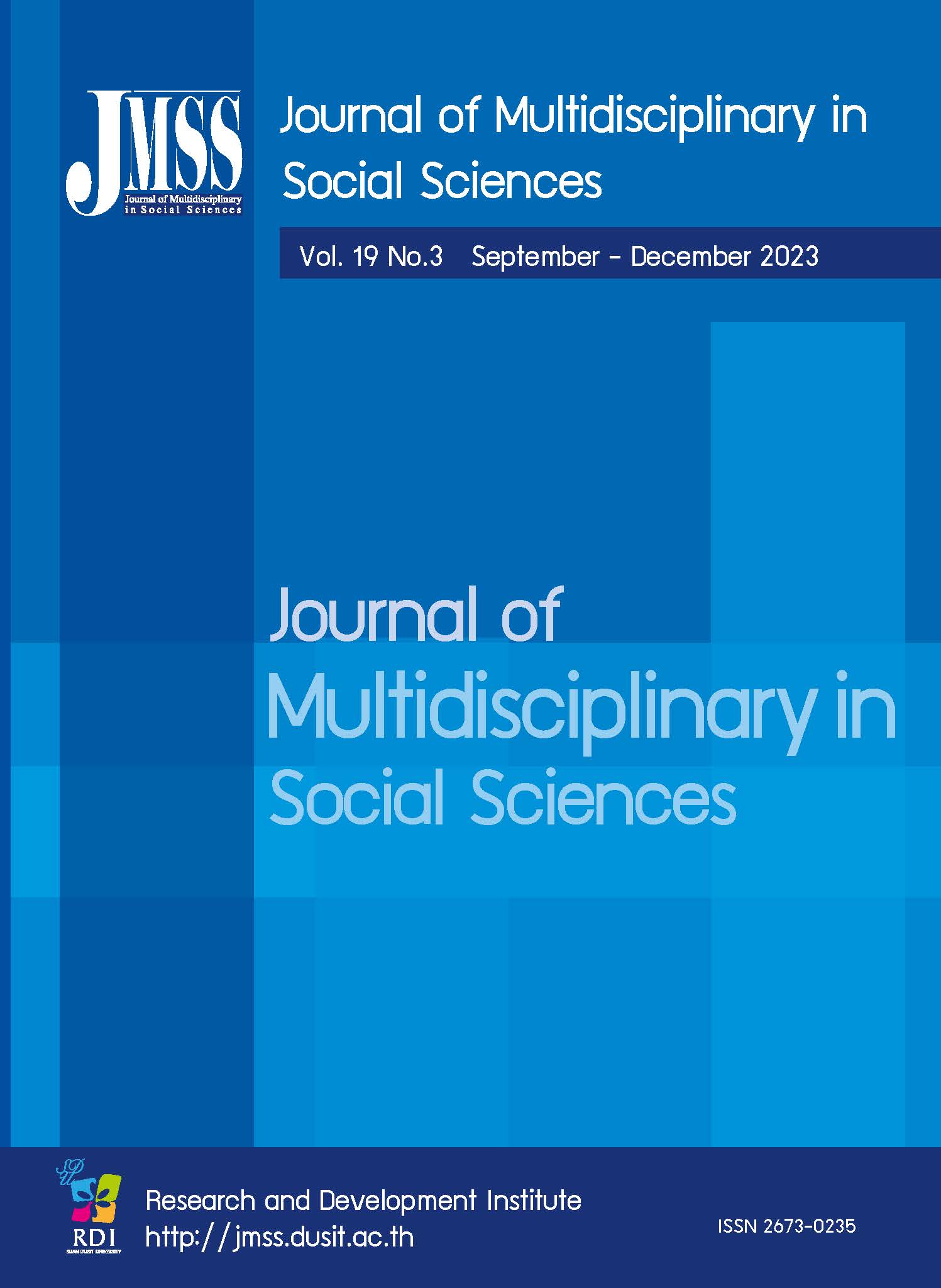Coffee Products and the Protections Under the Aspect of Geographical Indication (GI) Law: A Case Study of Doi Tung Coffee
Keywords:
Geographical Indication, Coffee, Trade-Related Aspects of Intellectual Property Rights (TRIPS)Abstract
Geographical Indications are granted to products with a particular geographical origin and qualities or a reputation attributable to that origin. It appeared to be an instrument utilized by many countries not only to reassure the consumers of the promised characteristic of products and but also to increase the economic value of specific products including the coffee product which is the most valuable
and traded tropical agricultural product planted all around the globe. The purpose of this article is to analyze and demonstrate certain differences in protection for coffee products within the scope of geographical indication law in a variety of jurisdictions, as well as the implications of geographical indication for coffee products. This article will concentrate on the current protections stipulated in
Thailand and the European Union as well as using Doi Tung Coffee as a case study that has been established and expanded its market capacity. Due to the fact that Thailand and European Union have jurisdictions that are distinct legal frameworks, obstacles pertaining to Doi Tung Coffee's experience are discussed.
References
Arfini, F., & Bellassen, V. (2019). Sustainability of European
Food Quality Schemes: Multi-Performance, Structure,
and Governance of PDO, PGI, and Organic Agri-Food
Systems. Cham: Springer.
Bandyopadhyay, D. (2018). Securing Our Natural Wealth: A
Policy Agenda for Sustainable Development in India
and its Neighboring Countries. Singapore: Springer.
Bangkok Post. (2020). 2 Thai coffee brands win EU geographic
trademarks. Retrieved from https://www.bangkokpost.
com/business/623400/2-thai-coffee-brands-win-eugeographic-
trademarks
Berenguer, F. (2004). Analisis critico de la Directiva Gaceta
Juridica de la Union Europea y de la. Competencia,
, 12-28.
Bodenhausen, G. H. C. (1967). Guide to the application of
the Paris Convention for the protection of industrial
property. Geveva: World Intellectual Property Organi
zation Retrieved from https://tind.wipo.int/record/
Bowen, S. (2010). Embedding Local Places in Global Spaces:
Geographical Indications as a Territorial Development
Strategy. Rural Sociology, 75(2), 209-243.
Buckwell, A. (1997). Towards a Common Agricultural and
Rural Policy for Europe, Reports and Studies No. 5,
European Commission, Directorate General for
Economic and Financial Affairs, Brussels.
BusinessWire. (2021). Coffee Market Report 2021 – Global
$100+ Billion Market Growth, Trends, Covid-19
Impacts, and Forecasts to 2026. Retrieved from https://
www.businesswire.com/news/home/20210601005832/
en/Coffee-Market-Report-2021---Global-100-Billion-
Market-Growth-Trends-COVID-19-Impacts-and-
Forecasts-to-2026---ResearchAndMarkets.com
Danielle, G., Barham, E., & Pirog, R. (2009). Defining and
marketing ‘local’ Foods: Geographical Indications for
U.S. Products: Journal of World Intellectual Property,
(2), 94-120.
DeCarlo, T. E., Franck, V. L., & Pirog, R. (2005). Consumer
perceptions of place-based foods, food chain profit
distribution and family farms. Leopold Center for
Sustainable Agriculture Marketing, Iowa State
University. Retrieved from https://dr.lib.iastate.edu/
server/api/core/bitstreams/a4e60c0c-953c-423b-9576-
bffd02a82df9/content
Donfrancesco, B., Guzman, N., & Chambers, E. (2018).
Similarities and differences in sensory properties
of high-quality Arabica coffee in a small region of
Colombia. Food Research International, 116(1), 645-651.
European Commission. (2021). Applications for food and
agricultural products. Retrieved from https://ec.europa.
eu/info/food-farming-fisheries/food-safety-and-quality
/certification/quality-labels/registration-name-qualityproduct/
applications-food-and-agricultural-products_en
Geographical Indications Protection Act B.E. 2546 (2003).
Giovannucci, D., Josling, T., Kerr, W., O'Connor, B., & Yeung,
M. T. (2009). Guide to geographical indications linking
products and their origins. Geneva: International Trade
Centre, 7(15), 21-25.
Gordon, I. (1999). Internationalisation and Urban Competition:
Urban Studies, 36(5-6), 1001-1016.
Lundstedt, L. (2016). Territoriality in Intellectual Property
Law. Stockholm: Stockholm University.
Ngokkuen, C., & Grote, U. (2011). The prediction of household’s
behaviour in adopting geographical indication
certification for Jasmine rice from northeastern
Thailand. International Journal on GSTF Business
Review, 1(1), 173-178.
Ram, S. (2017). Geographical Indications on Coffee. Paper
presented at the First Dali Binchuan International
Coffee Forum, Zhukala, China. Retrieved from
https://www.researchgate.net/publication/323014375_
Geographical_Indications_on_Coffee
Samoggia, A., & Riedel, B., (2018). Coffee consumption and
purchasing behavior review: Insights for further
research. Appetite, 129, 70-81.
Samuel, S. (2021). Top 10 Widely Consumed Drinks in the
World!!. Retrieved from https://besttoppers.com/top-
-widely-consumed-drinks/
Shukla, V. (2016). Historical development of geographical
indication law under international arena. International
Journal of Law, 2(4), 1-4.
Smith, N., Suthitakon, N., Gulthawatvichai, T., & Karnjanakit,
S. (2019). Creating a coffee tourism network in the
north of Thailand. Local Economy: The Journal of the
Local Economy Policy Unit, 34(7), 718-729.
Statista. (2021). Coffee: Thailand. Retrieved from https://www.
statista.com/outlook/30010000/126/coffee/thailand
#market-revenue
Suwanvijit, W., & Promsa-ad, S. (2017). Adding Value to
Thailand Robusta Coffee through Geographical
Indication. Paper presented at the IAFOR International
Conference on the Social Science, Hawaii Conference
Series 2017, Hawaii, the United States. Retrieved from
https://papers.iafor.org/wp-content/uploads/papers/
iicsshawaii2017/IICSSHawaii2017_33912.pdf
Sylvander, B., Lagrange, L., and Monticelli, C. (2007). Les
signes officiels de qualite et d’origine Europeens.
Quelle insertion dans une economie globalisee?,
Économie rurale 299(3), 7-23.
TradeEconomy. (2021). Thailand: Imports and Exports of
Coffee. Retrieved from https://trendeconomy.com/data/
h2/Thailand/0901
Wongburanavart, A. (2021). Measures and Guidelines for
Protection of Geographical Indication of Agricultural
Products in Chiang Rai. Chulalongkorn Law Journal,
(2), 213-235.
World Intellectual Property Organization. (1979a). Lisbon
Agreement for the Protection of Appellations of Origin
and their International Registration (as amended on
September 28, 1979) (Official translation). Retrieved
from https://wipolex.wipo.int/en/text/285838
World Intellectual Property Organization. (1979b). Madrid
Agreement Concerning the International Registration
of Marks (as amended on September 28, 1979) (Official
translation). Retrieved from https://wipolex.wipo.int/
en/text/283529
World Intellectual Property Organization. (2009). The
Economics of Intellectual Property. Suggestions
for Further Research in Developing Countries and
Countries with Economies in Transition. Geneva:
World Intellectual Property Organization.
World Trade Organization. (2020b). Overview: the TRIPS
Agreement. Retrieved from https://www.wto.org/
english/tratop_e/trips_e/intel2_e.htm

Downloads
Published
How to Cite
Issue
Section
License

This work is licensed under a Creative Commons Attribution-NonCommercial-NoDerivatives 4.0 International License.







